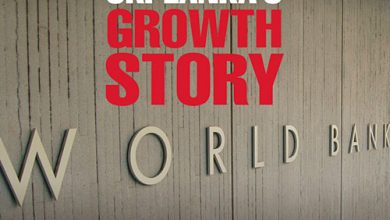COVID-19 IMPACT
RECESSION BLUES
Shiran Fernando reports on the potential economic fallout from COVID-19
We live in unprecedented times and continue to experience the impact of COVID-19 with lockdowns remaining in place. The coronavirus can be categorised as a ‘black swan,’ which refers to an event that has a low probability but extensive spread… and stark consequences.
The humanitarian and social impact of COVID-19 has been severe. Debate over the business and economic fallout is ongoing with the outbreak continuing to impact the world. While the global economy is being affected, the impact on Sri Lanka’s fragile economy will be compounded.
GLOBAL RECESSION Heading into 2020, global growth was expected to outperform that of the previous year, propelled by an easing of tensions in the Sino-US trade war and greater clarity with regard to Brexit. However, this expectation proved fragile and sensitive to black swan risks. COVID-19 has jolted the prospect from one of growth to a potential global recession this year.
According to a Reuters poll conducted in the third week of March, the world economy was already in a recession as countries and businesses shut down to curtail the spread of COVID-19 despite the emergency stimulus provided by many central banks.
The economic fallout of COVID-19 is different to other global recessions in the sense that it reflects a supply, demand and market shock compared to one of the three shocks inducing another. Indeed, the shock is widespread, affecting everything from global supply chains and airline cancellations to the closure of borders.
LOCAL IMPACT There’s been an initial economic policy reaction both on the fiscal and monetary policy fronts. The Central Bank of Sri Lanka cut policy rates twice (i.e. both the lending and deposit rates) while reducing the liquidity rate vis-à-vis commercial banks so as to boost overall market liquidity.
In addition, the government introduced a slew of measures to ease the impact on the public and vulnerable sectors.
But the degree to which macro stimulus can be utilised is limited given the measures already announced following the presidential election last November.
 The initial pressure will be felt in terms of the currency and in fact, this has already materialised amid a strengthening of the US Dollar and weakness in emerging market currencies such as the Sri Lankan Rupee. The rupee depreciated by over 10 percent between the beginning of the year and early April.
The initial pressure will be felt in terms of the currency and in fact, this has already materialised amid a strengthening of the US Dollar and weakness in emerging market currencies such as the Sri Lankan Rupee. The rupee depreciated by over 10 percent between the beginning of the year and early April.
As investors seek safe haven assets due to uncertainty in the global economy, portfolio inflows back to the US will result in a strengthening of the dollar. This could cause the rupee to depreciate further.
SUPPLY CHAINS Disruptions to supply chains and business activity are having a major impact on Sri Lanka’s export trajectory. Meanwhile, the tourism industry is at a virtual standstill, having only recently recovered from the Easter Sunday terrorist attacks. Less income from the third largest source of foreign exchange will impact Sri Lanka’s dollar earnings.
Sri Lanka would also be impacted by lower worker remittances. While inflows have been stagnant at between US$ 6.5 and 7.2 billion dollars since 2014, low global oil prices are likely to exert further pressure on inward remittances.
Middle Eastern countries from which close to 50 percent of Sri Lanka’s remittance inflows originate are under pressure with potential staff cuts in response to lower oil prices. This trend was observed when inflows declined during the 2014/15 period as well.
While supply chain disruptions can be addressed through mitigation strategies to source alternate suppliers, it may be more difficult to face the challenges stemming from a slowdown in growth, and demand from major export markets such as the US and EU.
If the world economy reverts to an environment similar to that of the global financial crisis, the impact on demand could hurt some of Sri Lanka’s vital export industries such as apparel. Slow demand will also damage other major exports such as tea, rubber and coconut.
LABOUR FORCE While the economy and businesses need to resume, there will be an impact on the workforce. Companies may look to reduce contract workers, freeze hiring and delay promotions or increments in a bid to ease the cash flow burden resulting from COVID-19 related disruptions.
It follows that domestic demand would likely slow down further, leading to lower growth as well.
By the third quarter of 2019, nearly a third of Sri Lanka’s labour force consisted of own account workers – i.e. those who own individual businesses. These SMEs generate economic activity for the country. Government intervention through targeted schemes that meet the daily or monthly needs of society will need to be implemented.
Sri Lanka’s economy has been relatively resilient over the last three years, having weathered storms such as a drought, a constitutional crisis and a terrorist attack. However, the most recent black swan event will stretch the nation’s ability to demonstrate its resilience – and it calls for bold decisions to overcome the prevailing situation.





